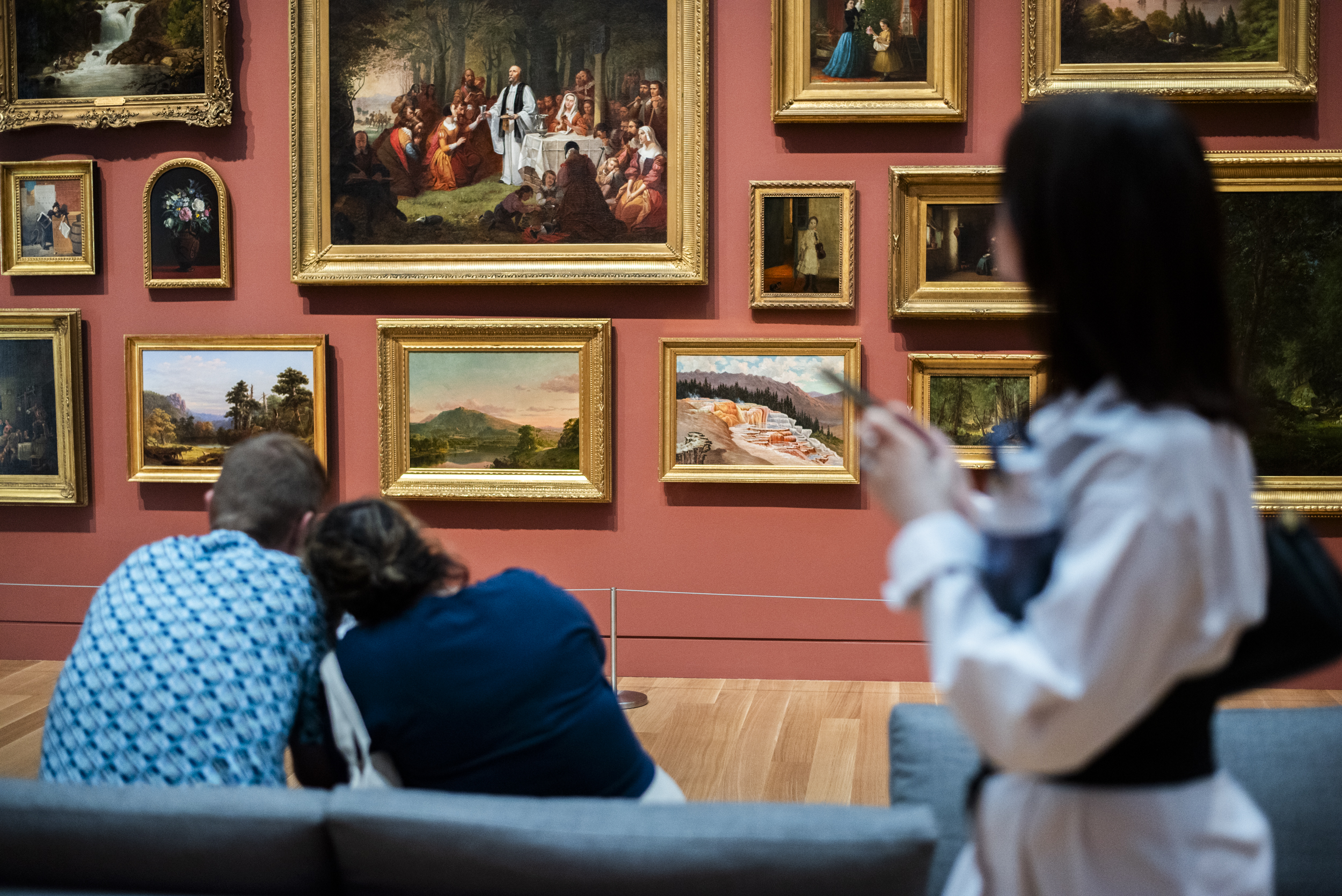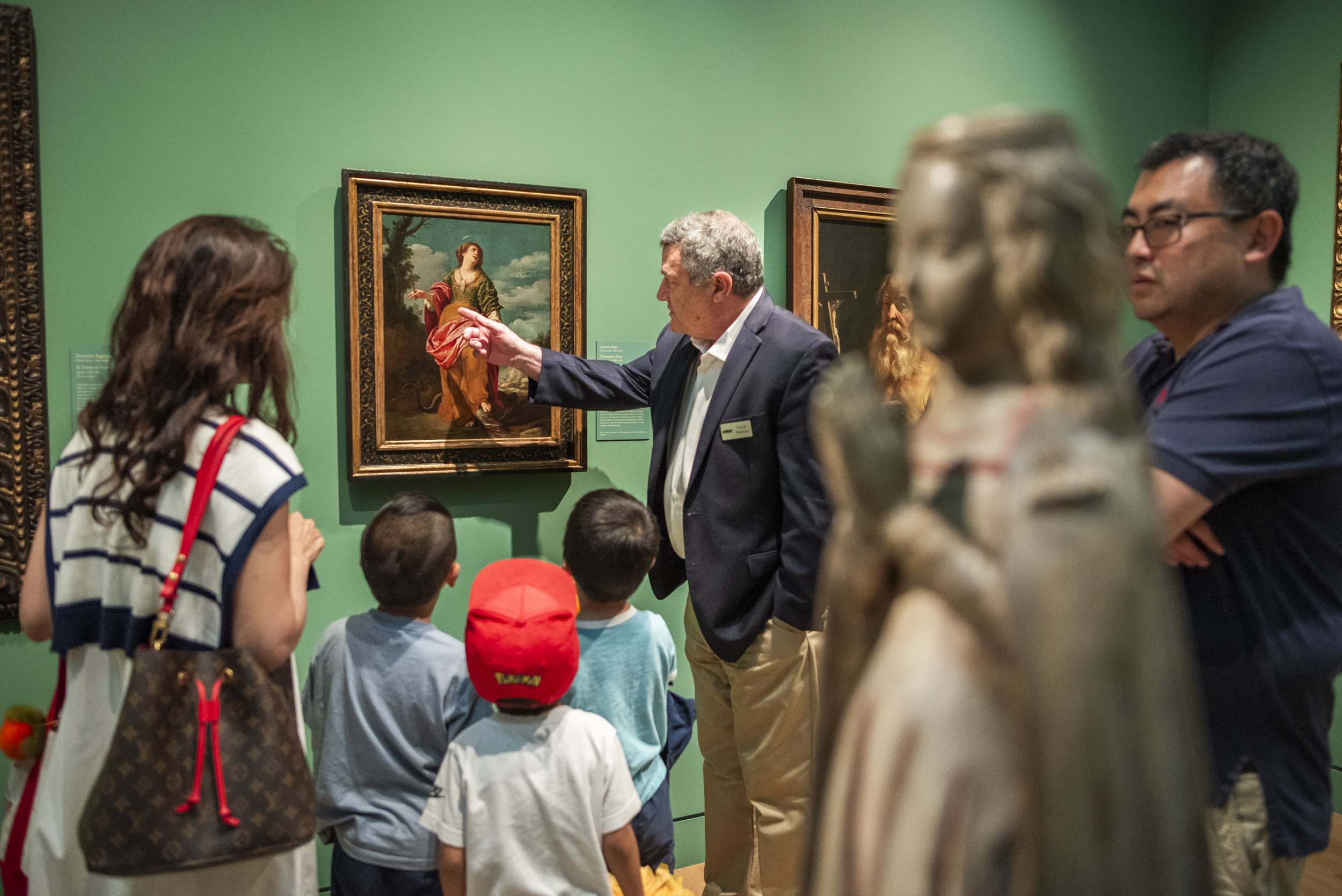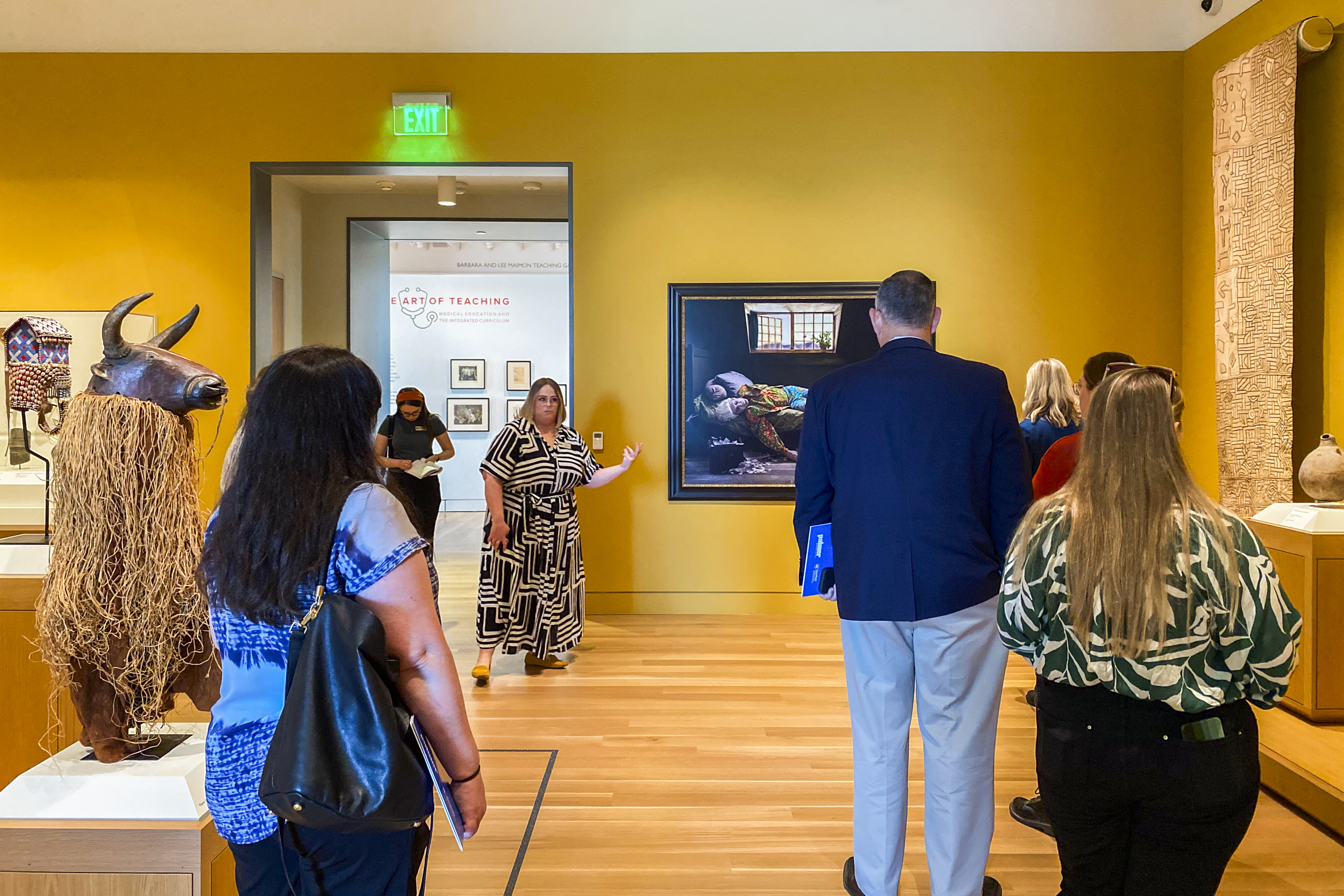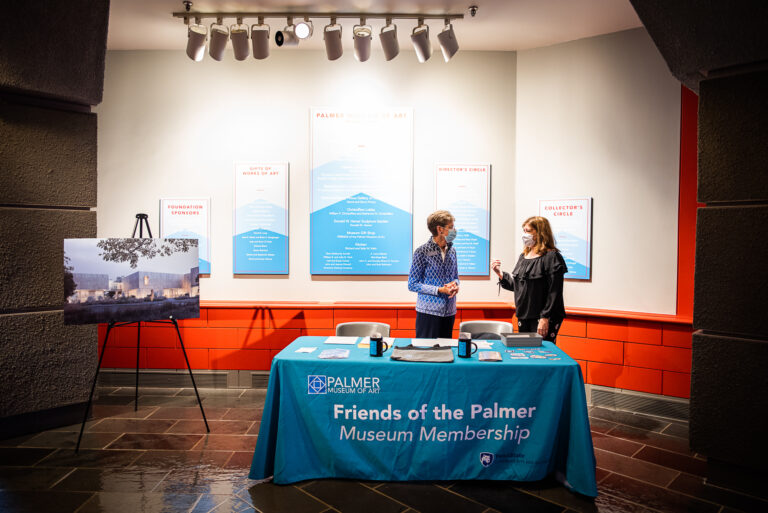About the Palmer Museum
Scroll below to learn more about the museum and its mission, core values, staff, upcoming new museum at the Arboretum, and more!Welcome to the Palmer Museum of Art
The Palmer Museum of Art at Penn State is the largest art museum collection between Pittsburgh and Philadelphia and the most significant academic art museum in the state of Pennsylvania. A key element of Penn State’s land-grant mission of teaching, research and public service, the Museum is a vital and accessible cultural resource for Penn State’s students, faculty, and scholars, as well as for all visitors to and from the entire central Pennsylvania region. Through its world-class objects, programs and outreach, the free Museum is a welcoming, inclusive, and vibrant forum for authentic arts experiences and cultivates meaningful dialogue about today’s most potent ideas and pressing concerns.
An expansive 21st-century teaching museum, the Palmer Museum of Art is a beacon for advancing the arts and humanities on Penn State’s University Park campus and throughout its diverse communities. The Palmer is dedicated to catalyzing groundbreaking research, scholarship and publications and providing impactful, object-based learning for Penn State and K-12 students. The Palmer’s rewarding and thought-provoking exhibitions and programs promote visitor participation, belonging and discovery. In January, the Palmer was voted one of ten winners in the national USA Today 10Best contest for Best New Museums of 2025.
Please note the Curtin Road location is closed.

Mission
The Palmer Museum of Art serves Penn State’s land-grant mission of teaching, research, and public service for the University, its students, and audiences from Pennsylvania, the nation, and the world. Through its collections and an array of thought-provoking exhibitions and cross-disciplinary programs, the Palmer encourages critical thinking, inspires curiosity and creativity, fosters inclusion and respect for diverse cultures, and upholds the values of relevance, integrity, service, and engagement.
Vision Statement
The Palmer Museum of Art is a gateway that connects communities through art.
Core Values
R – Relevance – We are a place where innovation and discovery happen every day, and we are responsive to an ever-changing world. We utilize technology, research, and our university community to cultivate partnerships that keep us relevant and on the leading edge.
I – Integrity – We act, work, and treat one other and our constituents with the respect and dignity deserving of a world-class museum and university, and we do so at all times and in all places. We are committed to the highest standards of the profession and to best practices around inclusivity, diversity, and equity, as well as to being leaders in the field which other institutions can model.
S – Service – We deliver our work in the spirit of service leadership, creating an open and welcoming environment for exploration, wellness, and stewardship. In doing so we advance the University’s threefold mission of teaching, research, and service.
E – Engagement – We create a culture and environment that leads to meaningful experiences for all and has a transformative impact on our constituents. We understand that to be truly engaged we must act and work in an open, transparent, and collaborative manner with our colleagues and those whom we serve.
Meet the Palmer
Submission Policy
The Palmer Museum of Art’s exhibition schedule is booked several years in advance. Our exhibition program is determined by the curatorial staff in concert with the director of the museum and is not developed from unsolicited submissions. Open calls for contemporary shows may be posted in the future, at which time we will announce a call for online applications. Due to limited staff, however, we are not able to respond to email or phone queries about exhibition possibilities. We appreciate your interest in the Palmer Museum.
Donations of Artwork
The Palmer Museum of Art accepts donations of art in accordance with its Collections Management Policy. Potential donors should contact the individual listed below to discuss the nature of works they would like to donate and to clarify their relevance to the museum’s collection.
Patrick McGrady, Charles V. Hallman Senior Curator 814-863-9187 pjm19@psu.edu
Photography and Image Requests
Reproductions of works in Penn State’s Palmer Museum of Art collections may be permitted or purchased for scholarly, commercial, or personal uses.
SCHOLARLY USE – Includes, but is not limited to publications by libraries, museums, and non-profit organizations, public-television broadcasts, and other items made available to a relatively limited audience.
COMMERCIAL USE – Includes, but is not limited to, for-profit publications such as books, motion pictures, commercial television, large-circulation or mass-market magazines, advertisements, calendars, posters, museum reproductions, postcards, note cards, or other items made available for sale to a relatively wide audience.
PERSONAL USE – Includes, but is not limited to, study, educational, or research purposes only and may not be published or reproduced.
Request an Image
If you require a high quality TIFF file for publication, please contact Assistant Registrar Shannon Hahn at sch5288@psu.edu to request an application for permission to reproduce a work of art in the collection.
If you wish to purchase a print for home display, click here.
COPYRIGHT – Please note that in many cases Penn State’s Palmer Museum of Art owns only the physical object, and does not assume responsibility for intellectual property, including copyright, or any other legal issues involved in the publication and reproduction of items in its collection; the copyright for objects in the museum’s collection is often retained by the artist or the artist’s estate. The responsibility for determining whether the particular work is under copyright and identifying and securing permission from all copyright holders rests with the applicant. The Palmer Museum of Art and Penn State assume no responsibility for any royalties or fees claimed by the artist, or on his or her behalf, or by any other copyright holder.
New Palmer Museum of Art

The Palmer Museum of Art constructed a new museum within the Arboretum at Penn State to replace the building on Curtin Road. The innovative new Palmer, designed by Allied Works with landscape design by Reed Hildebrand, is a larger facility that features education spaces, including a teaching gallery, flexible event spaces, and nearly twice the exhibition space of the current museum, allowing for expanded student, faculty, and public access to Penn State’s growing collection of 11,000 works of art.
To access information about the new Palmer Museum of Art and the Arboretum at Penn State, please click below to visit our online media room.
Online Media Room


